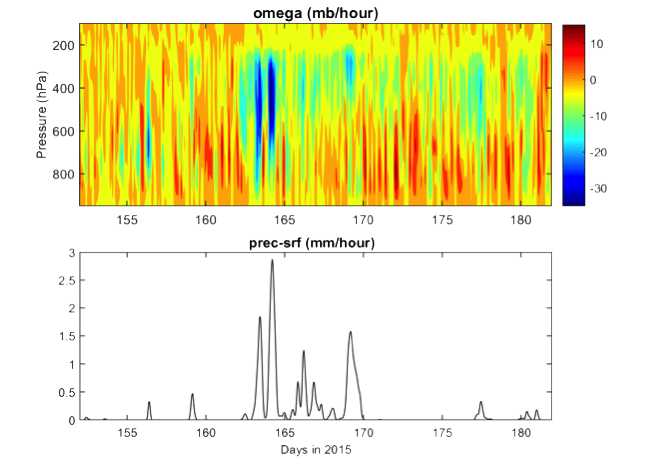Version 2 of the Continuous Large-Scale Forcing Data Now Available
Published: 14 November 2017

Updated November 2017: Data are now available for the Southern Great Plains atmospheric observatory for the year 2015. The data sets are in netCDF format.
Updated February 2017: Data are now available for the Southern Great Plains atmospheric observatory for the years 2013 and 2014.
Version 2 of the continuous large-scale forcing data value-added product known as VARANAL for the Southern Great Plains (SGP) atmospheric observatory has been released for the years 2012 to 2014 and for June through August 2015. This product includes both the large-scale forcing terms and the evaluation fields, which can be used for driving single-column models, cloud-resolving models, or large-eddy simulations, and validating model simulations.
This version of continuous forcing data has several updates. One major update is the incorporation of eddy correlation flux measurement system (ECOR) data into the analysis. Surface latent and sensible fluxes are now a merged product from energy balance Bowen ratio (EBBR) measurements and ECOR measurements. The background data are also updated from hourly Rapid Update Cycle (RUC) (before May 2012) to the Rapid Refresh (RAP) (after May 2012) analysis. Background data are constrained with the ARM surface measurements and the National Oceanic and Atmospheric Administration GOES-8 satellite data.
Analyzed forcing data follow the resolution of the previous version, with 1-hour time resolution and 25 hPa vertical resolution. The data sets are in both ASCII and netCDF formats. Data for 2015 and 2016 are being processed and will be ready in late 2017.
Feedback and use of the data are welcomed and encouraged. For questions or to report data problems, please contact Shuaiqi Tang or Shaocheng Xie. To access the data set, please browse the ARM Data Center. (Go here to create an account to download the data.)
*Note: Sounding data were not used in this data set.
# # #
The ARM Climate Research Facility is a national scientific user facility funded through the U.S. Department of Energy’s Office of Science. The ARM Facility is operated by nine Department of Energy national laboratories.
The ARM Climate Research Facility is a DOE Office of Science user facility. The ARM Facility is operated by nine DOE national laboratories, including .
Keep up with the Atmospheric Observer
Updates on ARM news, events, and opportunities delivered to your inbox
ARM User Profile
ARM welcomes users from all institutions and nations. A free ARM user account is needed to access ARM data.


















